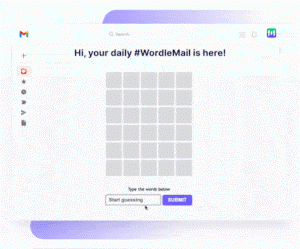The term “digital workplace” describes all of the technology solutions and applications companies rely on to be competitive in the modern business world. Nearly all companies have some form of a pseudo-digital workplace already, as technology is an essential part of the business landscape. But while the 2019 State of the Digital Workforce report compiled by CMSWire showed that nearly half of organizations surveyed consider the digital workplace extremely or very important, the majority are still at an early stage of maturity, which means there is tremendous room for growth.
Given that 77 percent of workers surveyed say they are more productive when working remotely, it’s clear more companies should be joining those who are already maximizing the opportunities provided by a digital workplace. According to a Deloitte report, examples of those companies range from RehabCare in the healthcare industry to Standard Chartered Bank in financial services to Alaska Airlines in transportation.
Here are three main areas of your business operations that can be improved by moving to a digital workplace:
Collaboration. A successful digital workplace fosters seamless collaboration between employees, departments and management with tools and applications that allow collaborators to share data and make updates instantly. For example, shared documents and calendar syncing allow for parties to work together and present ideas quickly.
Communication. Another hallmark of the modern digital workplace is the technology that promotes communication throughout the corporate hierarchy. Traditionally, this meant email, but apps such as Slack and Zoom make communication much more organic and engaging. They allow for rich media attachments and video conferencing that feel more like face-to-face interactions.
Engagement. According to the research firm Gallup, engaged teams are 21% more profitable than their unengaged peers. That is why it is so crucial for a digital workplace to increase engagement. For example, corporate intranets that incorporate common social media functions along with feedback and recognition tools can make employees feel appreciated and more attentive.
Ultimately, the digital workplace is important, and with the massive increase in remote workers recently, it will only become a more crucial consideration for businesses in the future. With that in mind, it is necessary to understand any misconceptions about the digital workplace in order to ensure you adopt this environment effectively.
What is the most common misconception about the digital workplace?
Many business leaders think that since they already use a set of programs and technology, they already have a digital workplace. What this fails to account for is how all of these disparate applications come together for the end-user.
The purpose of a digital workplace is to increase collaboration, communication and engagement to improve overall productivity. This requires an elegant user experience. If employees are overwhelmed with the number of different solutions they need to use on a daily basis, the opposite effect occurs. The user experience is confusing and frustrating, time is wasted, and productivity actually decreases. After all, if employees have to juggle between email, calendars, websites and documents (not to mention the internal solutions associated with your business), they can misplace materials, forget important dates or lose track of their tasks easily.
What can be done to prevent this outcome?
Focus your digital workplace on improving user experience. You can start by ensuring your business applications are tied to one central hub or intranet. This allows employees to access all of their important information from a single place, maximizing productivity and minimizing time-consuming issues.
Business & Finance Articles on Business 2 Community
(45)
Report Post




